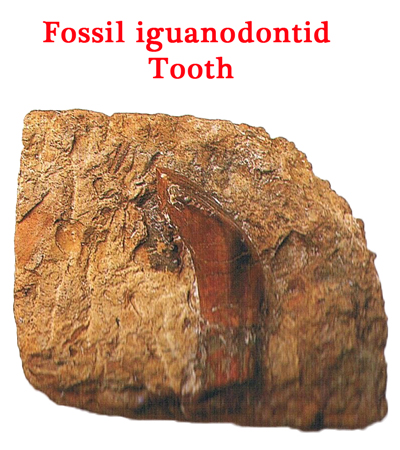Many Happy Returns Gideon Mantell
Happy Birthday Gideon Mantell
February 3rd, is the anniversary of the birth of Gideon Mantell, one of the early pioneers of the science of palaeontology. It was Mantell who named Iguanodon, the second genus of dinosaur to be erected (1825), although at the time, the Order Dinosauria had itself not been established. Throughout much of his working life, Mantell had a bitter rivalry with Sir Richard Owen. Owen attempted to undermine a lot of Mantell’s research and he even took the credit for some of Mantell’s insights, however, these days, most scientists appreciate the contribution made to the nascent study of ancient life made by this Sussex doctor and amateur geologist.
Estimating the Size of Iguanodon
Gideon Mantell did much to fire the public’s imagination for prehistoric animals and monsters from the past. He spent as much time as he could, often at the expense of his own medical practice, studying the strange fossilised bones and teeth that were being found in quite surprising numbers in the local Sussex quarries. Mantell is famous for identifying the fossilised, leaf-shaped teeth of a plant-eating prehistoric animal. He compared the teeth with the dentition of a living iguana, a lizard that had recently been brought to London from Barbados (1824). He was struck by how similar the fossil tooth was to the tooth of the living reptile, but the fossil tooth was much bigger.
A Model of an Iguanodon (PNSO Age of Dinosaurs)
The picture (above) shows a model of an Iguanodon dinosaur from the PNSO model range.
To see this range: PNSO Age of Dinosaurs Prehistoric Animal Figures.
Iguanodon Tooth Study
The tooth study led Mantell to erect the genus Iguanodon (iguana tooth). Just how big was this extinct prehistoric reptile? To calculate the size of Iguanodon, Mantell compared the ancient bones to the bones of, what he thought at the time was its living relative, the iguana lizard. As the scapula (shoulder blade) was twenty times bigger, this and other comparative measurements led Mantell to state that Iguanodon must have been around twenty times the size of a five-foot iguana. The fossil reptile, therefore could have been approximately 100 feet long.
An Early Illustration of the Dinosaur Iguanodon as Depicted by Mantell
The thought of such a huge beast fascinated the Georgian public and academics alike. Our fascination with dinosaurs had begun.
Of course, Mantell’s simple linear scale was incorrect, even the largest iguanodontids were only around nine to ten metres in length. Still sizeable, but not the thirty metre plus leviathans that Mantell had envisaged. In addition, extensive revisions to the Iguanodon genus and the Iguanodontidae family has led to the change of the holotype for this species from the isolated teeth and partial remains identified by the Sussex doctor.
Revision of the Holotype
The original holotype material (assigned to Iguanodon anglicus), consisted of teeth and fragmentary bones. The International Commission on Zoological Nomenclature (ICZN) ruled in 2000 AD that the type species be changed to the I. bernissartensis with the new holotype IRSNB 1534, a much more complete specimen which was part of a treasure trove of Iguanodon fossils (at least thirty-eight individuals) discovered in a Belgium coal mine in 1878 and studied by Louis Dollo.
A Fossilised Dinosaur Tooth (Iguanodontidae)
A Memorial to Dr Gideon Mantell
A memorial has been erected to Gideon Mantell, it is located in the village of Cuckfield, near Haywards Heath (West Sussex, England). It was from Cuckfield that many of the fossil remains of the Iguanodon were discovered. Dr Mantell received a sandstone block that contained an array of dis-articulated Iguanodon bones. This huge block of stone is on exhibit at the London Natural History museum, it has been nick-named the “Mantell-piece”. Happy birthday Gideon.
Visit Everything Dinosaur’s website: Everything Dinosaur.




